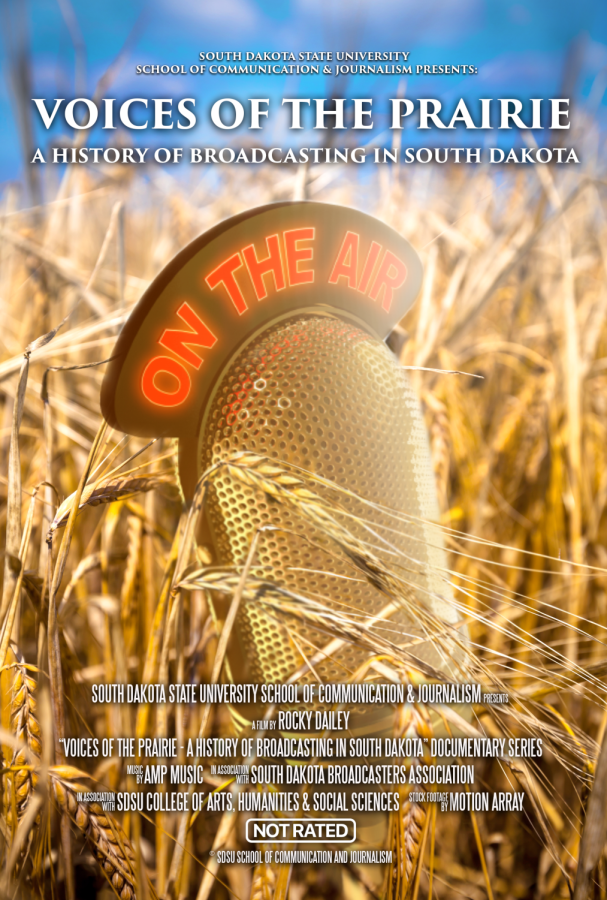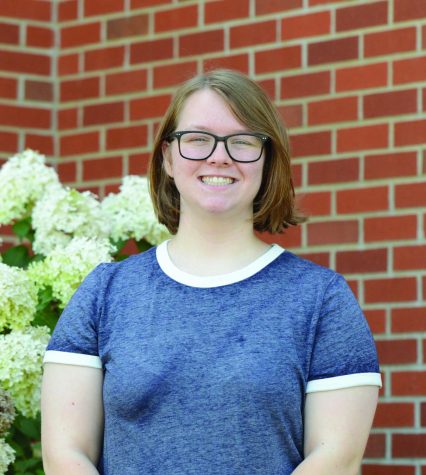Professor to premiere broadcast history documentary
April 5, 2022
Those who walk through Yeager Hall will easily notice the photography on the walls and the South Dakota Newspaper Hall of Fame plaques by the main entrance.
What many might not notice is a lack of representation for the radio and broadcast sides of journalism in South Dakota’s history.
This is something Rocky Dailey, an associate professor in the School of Communications and Journalism (COJO), would like to draw attention to in his upcoming documentary series, “Voices of the Prairie.”
“I started thinking we really need to start telling the story and kind of preserving … the work of some of these people,” Dailey said.
The documentary started in fall 2020 after receiving a grant from South Dakota State University and will tell the story of broadcast in South Dakota and the prominent figures in its history. The first episode largely focuses on the history of radio in South Dakota.
“Radio was the first mass medium, and it was unique in South Dakota, I think, because we’re such a rural community,” Dailey said. “We had newspapers and books and things like that, and a fairly educated population even early on in terms of literacy, but radio was really the first medium that tied the state together that could reach different areas.”
Some notable broadcasters Dailey mentions in his documentary include Verl Thomson, who worked at the first radio broadcast station in Sioux Falls in 1924.
“His radio station that he started was in the basement of his house,” Dailey said. “So Ginger, his daughter, talks about how it wasn’t uncommon to see one of the hosts or radio engineers sleeping on the couch.”
Other people Dailey plans to mention include Dean Sorenson, who began his radio career in 1957 at 18 years old working at KORN radio in Mitchell, John Goeman, who worked at KJAM Radio in Madison for several decades and Monte Loos, a long time broadcaster and manager at KOTA-TV in Rapid City.
Josh Westwick, director of COJO, expressed his excitement for the project and the opportunities it presents.
“It’s really critical and exciting that … he is chronicling the rich history of broadcasting in South Dakota, and now we’re going to have an opportunity to share that and disseminate that to broad audiences,” Westwick said.
Dailey also says he’s received help from the South Dakota Broadcasters Association, COJO and student assistants to fund, promote and assemble the documentary. This has also opened up opportunities for further interviews, he said.
“It’s kind of a spider web,” Dailey said. “The college did a story they put on the website of the project, and when that went, I probably got a dozen emails from different people who saw it, who [said] anything from ‘oh, glad you’re doing this,’ to ‘oh, I know so-and-so.’”
Dailey added that the series will help preserve the history of broadcast in the state in an easily accessible format.
“It’s kind of a documentation of this history, which hasn’t really been compiled,” he said. “There are bits and pieces out there, but it hasn’t really been put in a digestible form that kind of tells a story.”
The first episode will premiere at the State Theatre in Sioux Falls April 8. While this event is not open to the public, Dailey says he and others are attempting to get the documentary on PBS, as well.
He also said that he plans to continue to have student involvement for later episodes, and those interested can reach out to his email for more information.























